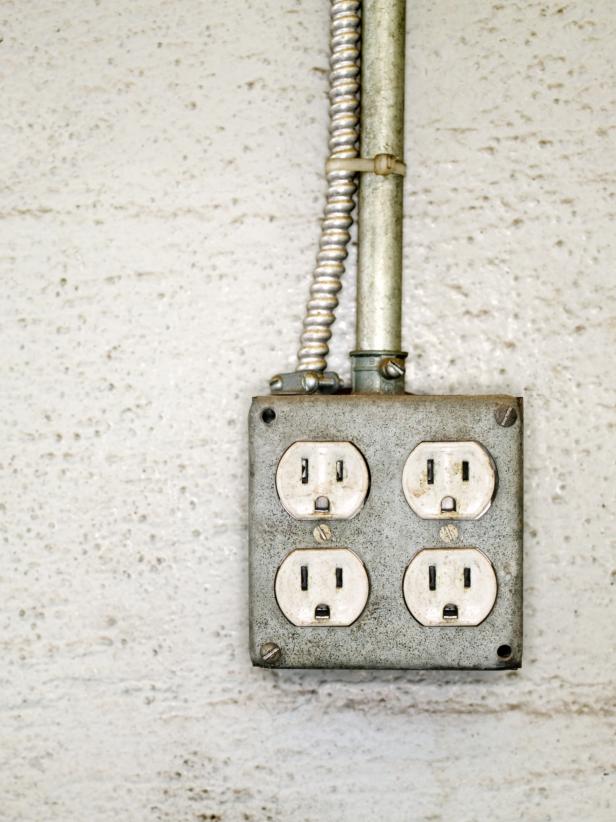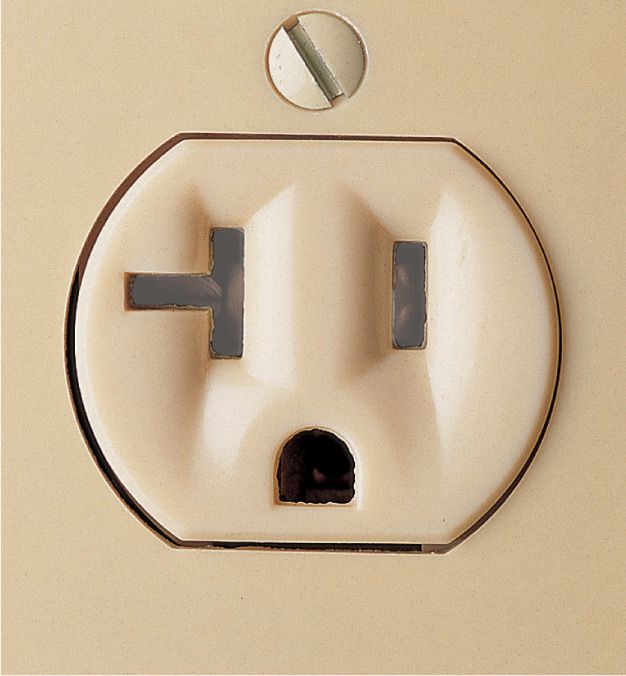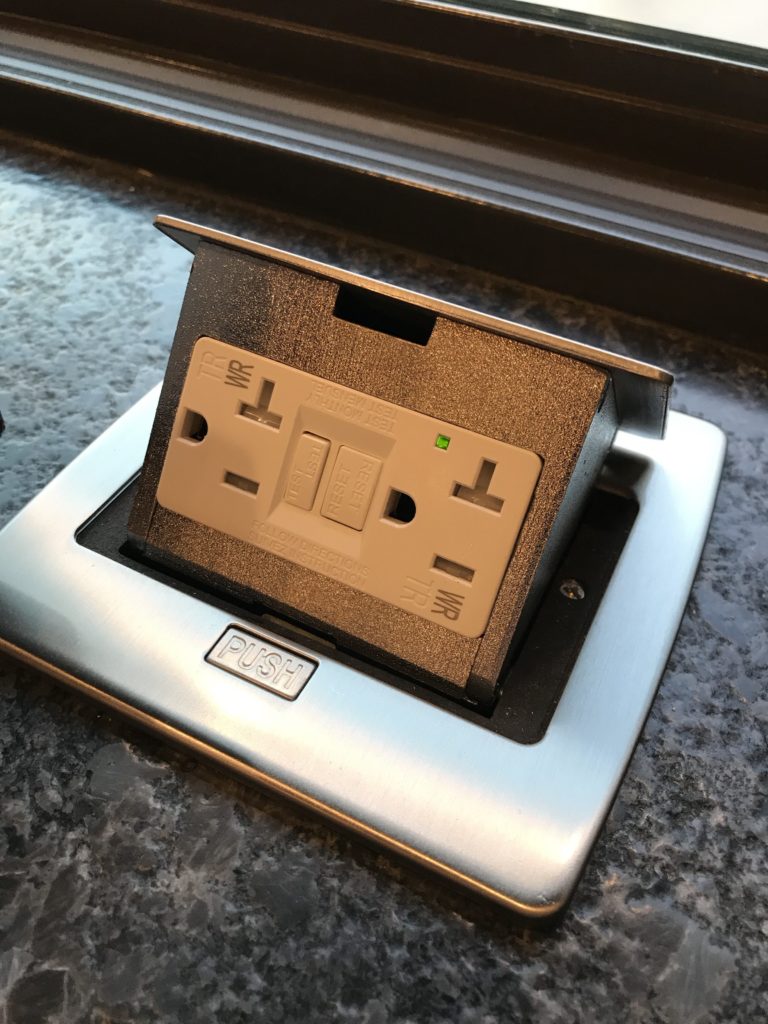
There are really only 2 reasons why you need ground fault circuit interrupters, or GFCIs, but they're both very, very good reasons. First of all, it's the law. Most local building codes require GFCI protection on receptacles (outlets) and some other devices in wet areas, work areas and outdoors (more on that later). Uk black jack. The second reason is that GFCIs help protect against dangerous electrical shock, including electrocution. Just to be clear on terminology, electrocution is a shock, and it's the last one you'll ever get, at least in this lifetime.
What GFCIs Do Borgata slot winners.
Old-fashioned two-prong receptacles, also known as outlets, connected to two-wire cables don't have the ground wires that protect people and electrical devices in case of a fault. Yet it is possible to retrofit a new three-prong or GFCI receptacle into the same outlet box without any rewiring, as long as the box itself is grounded. Installing a GFCI outlet doesn't have to be confusing. Follow these steps and photos to install a GFCI without getting line and load connections confused. GFCI outlets reduce the danger of deadly shock from faulty plug-in cords and devices. A GFCI (ground fault circuit interrupter) is a special type. Perhaps the most common is the GFCI receptacle, the one with the flat face and the little red and black buttons between the two sets of plug slots. A GFCI receptacle can be wired to provide protection at the receptacle alone or to protect itself and other receptacles and devices 'downstream' along the same circuit. Oct 12, 2020 The Leviton GFNT1-W is an all-white receptacle with 15 or 20 Amps of power, housed in a sturdy wall plate that's sold with the device. The directions given during installation are a breeze to follow, so if you plan on doing this solo, the brand is among the highest recommended products to purchase. If the GFCI detects any change in the current, it immediately switches the power off to that circuit. There are three types of GFCI protection: GFCI circuit breakers, portable GFCI units and GFCI receptacles. GFCI breakers and receptacles are capable of protecting multiple outlets.
Ground fault circuit interrupters do exactly what their name implies; they interrupt a circuit experiencing a ground fault. A ground fault is a potentially dangerous (but not uncommon) situation in which electrical current follows an unintended path.
T Slot Gfci Receptacle Receptacles
Let's look at the classic example of a dimwitted (or seriously time-crunched) person using a hair dryer in a bathtub. One ugly possibility is that the user drops the dryer into the water. Another is that the dryer malfunctions and develops a short (say, a wire comes loose inside), allowing electricity to pass through the dryer's handle and into the user's hand. Since the hand is connected to the body and the body is sitting in water, the body creates a relatively convenient path for the electricity to get to the water (electricity likes water because it's a pretty good conductor, providing easy travel). Along the way, the electrical current can stop the body's heart.
Now, if the dryer is plugged into a GFCI outlet, the outlet will sense a leak, or imbalance, in the current and trip its own internal breaker, cutting the power and stopping the shock short. Even if you're not careless enough to use a hair dryer while bathing, you could easily create a ground path for a fault by holding the dryer in one hand and touching the metal on a sink faucet. The faucet may be connected to metal water pipes, which are likely to be grounded, thus creating an attractive avenue for the electrical current. In other words, you don't have to be dimwitted or even extremely late to put yourself at risk. And that's why you need ground fault circuit interrupters in the bathroom, among other places.

Where GFCIs are Required
Now that you've answered the question 'Why do I need ground fault circuit interrupters?' the next question to ask is 'Where do I need ground fault circuit interrupters?' The most detailed answer lies with your local building department, which has the final word on electrical system requirements for homes in your area. But most codes follow the same standard, the National Electrical Code book, or NEC.
Typically you need GFCI protection on all receptacles in bathrooms, on easily accessible outlets in garages and basements, and on most outdoor outlets. In the kitchen, GFCI protection is required on all outlets serving the countertop areas (including all of your backsplash receptacles) and any outlets within 4 feet of a sink. You also need GFCIs within 6 feet of other sinks, such as those in laundry rooms or wet bars.
How to Get GFCI Protection
GFCI protection comes in a few different forms. Perhaps the most common is the GFCI receptacle, the one with the flat face and the little red and black buttons between the two sets of plug slots. A GFCI receptacle can be wired to provide protection at the receptacle alone or to protect itself and other receptacles and devices 'downstream' along the same circuit. It can't protect devices upstream; that is, between the power source (breaker box) and the receptacle.

Another option is to install a GFCI breaker, which provides ground-fault protection for everything wired to the circuit. When you're working outdoors and are plugging into a non-GFCI outlet, a GFCI extension cord gives you the (highly recommended) protection.
Why Do INeed a Ground with Ground Fault Circuit Interrupters?
GFCI protection is not the same thing as grounding. Richard petty slot machine. You don't need a grounded circuit for a GFCI to do its primary job, but a GFCI installed on a non-grounded circuit does not provide a true ground, or equipment ground. In short, this means that surge protectors and other devices that require a ground may not do their jobs.

There are really only 2 reasons why you need ground fault circuit interrupters, or GFCIs, but they're both very, very good reasons. First of all, it's the law. Most local building codes require GFCI protection on receptacles (outlets) and some other devices in wet areas, work areas and outdoors (more on that later). Uk black jack. The second reason is that GFCIs help protect against dangerous electrical shock, including electrocution. Just to be clear on terminology, electrocution is a shock, and it's the last one you'll ever get, at least in this lifetime.
What GFCIs Do Borgata slot winners.
Old-fashioned two-prong receptacles, also known as outlets, connected to two-wire cables don't have the ground wires that protect people and electrical devices in case of a fault. Yet it is possible to retrofit a new three-prong or GFCI receptacle into the same outlet box without any rewiring, as long as the box itself is grounded. Installing a GFCI outlet doesn't have to be confusing. Follow these steps and photos to install a GFCI without getting line and load connections confused. GFCI outlets reduce the danger of deadly shock from faulty plug-in cords and devices. A GFCI (ground fault circuit interrupter) is a special type. Perhaps the most common is the GFCI receptacle, the one with the flat face and the little red and black buttons between the two sets of plug slots. A GFCI receptacle can be wired to provide protection at the receptacle alone or to protect itself and other receptacles and devices 'downstream' along the same circuit. Oct 12, 2020 The Leviton GFNT1-W is an all-white receptacle with 15 or 20 Amps of power, housed in a sturdy wall plate that's sold with the device. The directions given during installation are a breeze to follow, so if you plan on doing this solo, the brand is among the highest recommended products to purchase. If the GFCI detects any change in the current, it immediately switches the power off to that circuit. There are three types of GFCI protection: GFCI circuit breakers, portable GFCI units and GFCI receptacles. GFCI breakers and receptacles are capable of protecting multiple outlets.
Ground fault circuit interrupters do exactly what their name implies; they interrupt a circuit experiencing a ground fault. A ground fault is a potentially dangerous (but not uncommon) situation in which electrical current follows an unintended path.
T Slot Gfci Receptacle Receptacles
Let's look at the classic example of a dimwitted (or seriously time-crunched) person using a hair dryer in a bathtub. One ugly possibility is that the user drops the dryer into the water. Another is that the dryer malfunctions and develops a short (say, a wire comes loose inside), allowing electricity to pass through the dryer's handle and into the user's hand. Since the hand is connected to the body and the body is sitting in water, the body creates a relatively convenient path for the electricity to get to the water (electricity likes water because it's a pretty good conductor, providing easy travel). Along the way, the electrical current can stop the body's heart.
Now, if the dryer is plugged into a GFCI outlet, the outlet will sense a leak, or imbalance, in the current and trip its own internal breaker, cutting the power and stopping the shock short. Even if you're not careless enough to use a hair dryer while bathing, you could easily create a ground path for a fault by holding the dryer in one hand and touching the metal on a sink faucet. The faucet may be connected to metal water pipes, which are likely to be grounded, thus creating an attractive avenue for the electrical current. In other words, you don't have to be dimwitted or even extremely late to put yourself at risk. And that's why you need ground fault circuit interrupters in the bathroom, among other places.
Where GFCIs are Required
Now that you've answered the question 'Why do I need ground fault circuit interrupters?' the next question to ask is 'Where do I need ground fault circuit interrupters?' The most detailed answer lies with your local building department, which has the final word on electrical system requirements for homes in your area. But most codes follow the same standard, the National Electrical Code book, or NEC.
Typically you need GFCI protection on all receptacles in bathrooms, on easily accessible outlets in garages and basements, and on most outdoor outlets. In the kitchen, GFCI protection is required on all outlets serving the countertop areas (including all of your backsplash receptacles) and any outlets within 4 feet of a sink. You also need GFCIs within 6 feet of other sinks, such as those in laundry rooms or wet bars.
How to Get GFCI Protection
GFCI protection comes in a few different forms. Perhaps the most common is the GFCI receptacle, the one with the flat face and the little red and black buttons between the two sets of plug slots. A GFCI receptacle can be wired to provide protection at the receptacle alone or to protect itself and other receptacles and devices 'downstream' along the same circuit. It can't protect devices upstream; that is, between the power source (breaker box) and the receptacle.
Another option is to install a GFCI breaker, which provides ground-fault protection for everything wired to the circuit. When you're working outdoors and are plugging into a non-GFCI outlet, a GFCI extension cord gives you the (highly recommended) protection.
Why Do INeed a Ground with Ground Fault Circuit Interrupters?
GFCI protection is not the same thing as grounding. Richard petty slot machine. You don't need a grounded circuit for a GFCI to do its primary job, but a GFCI installed on a non-grounded circuit does not provide a true ground, or equipment ground. In short, this means that surge protectors and other devices that require a ground may not do their jobs.
T Slot Gfci Receptacle Tester
Any receptacle or device that's wired for GFCI protection on an ungrounded circuit should carry a visible label indicating 'no equipment ground.' These labels often come as little stickers included with new GFCI receptacles. If you install a GFCI to protect standard receptacles downstream of the GFCI, each of those outlets also needs a label, since none of them is grounded.
Find a licensed electrician in your area to install GFCIs for you.
Philip Schmidt writes for Networx.com.
20 Amp T Slot Gfci Receptacle
Updated June 17, 2018.